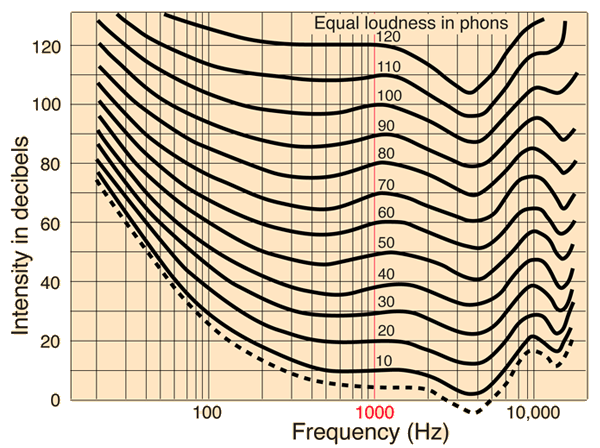Summary and Conclusion
So, all four of these physical principles which affect the sound are defined by the room.
One saving grace is that when modern standards for home building were established, the use of gypsum board on studs was decided upon in part because of the bass dampening properties of the materials and construction methods. The drywall thickness and the distance between studs effectively creates a vibrating panel which absorbs acoustic energy in the room. This was desired by architects and regulators mostly to improve the well-being of living in a house built with this style of construction as it mellows the typical noise in a house. Sounds such as closing doors, talking, playing the console radio, dropping a box, cooking, and so on is less annoying on your ears in a house build with stud and drywall surfaces rather than hard stone, concrete, plat boards, and so on. If you have ever visited a medieval castle you’ve experience how terribly annoying even talking can be. The ancient architects dealt with room noise pollution by mastering the art of diffuse reflections and this created the gorgeous reverb decay sought after by recording engineers when creating music for playback. But it would be far too expensive to build modern homes with solid concrete walls and ceilinging which also incorporated broken surfaces, nooks, strange angles, and so on, to get a more smooth and natural reverberant decay of sound.
This is why I comment so often about “most rooms are not 100% reflective.” Modern drywall based rooms are quite reflective in the low treble to upper bass, but in the lower bass the walls will vibrate and flex and thus absorb some of the energy, which increases the rate of decay. Most designer put soft furnishing in living spaces, such as couches, rugs or carpet, drapes/curtains, and so on which effectively control a good portion of the treble and upper midrange. Then large, odd-angled furnishings such as tables, couches, chairs, cabinets, floor lights, and so on diffuse sound in the midrange and treble. So, houses which are bare and scarcely furnished tend to be more difficult to spend time in over the added decay time of sound. Likewise, a densely furnished room may seem heavy and dead to one’s ears which can also be disconcerting over long periods of time if you are interacting with people.
Anyway, bass is a tricky beast, and getting everything right in an existing house is a matter of luck in the available space being more appropriate for sound reproduction, the amount of bass trapping you can install, the placement of the speakers and the listener, and so on.
And, yes, you can measure this will things like RT60, Waterfall Plots of the room showing the decay from different frequencies, and standard “bass decay” plots. One simple test almost anyone could do is to play back a two to four cycle sinewave signal through your speakers at specific frequencies in the bass and record them a computer, then view the recording and see how long the sound continues to resonate in the recording compared to the two cycle pulse from the source file. This will expose the limitations of the speaker and the room simultaneously.
Keep in mind, measuring the in-room frequency response, especially in the bass range, cannot effectively visualize things like sustain or resonances. Frequency Response Curves do show nulls and peaks caused by reflective surfaces, and using Pink Noise Response Curves can show the strongest resonant frequencies, but they do not show how sound decays.
This was my attempt to explain the many complexities of the issues with reproducing bass in most homes.
Let me know if there are questions.


